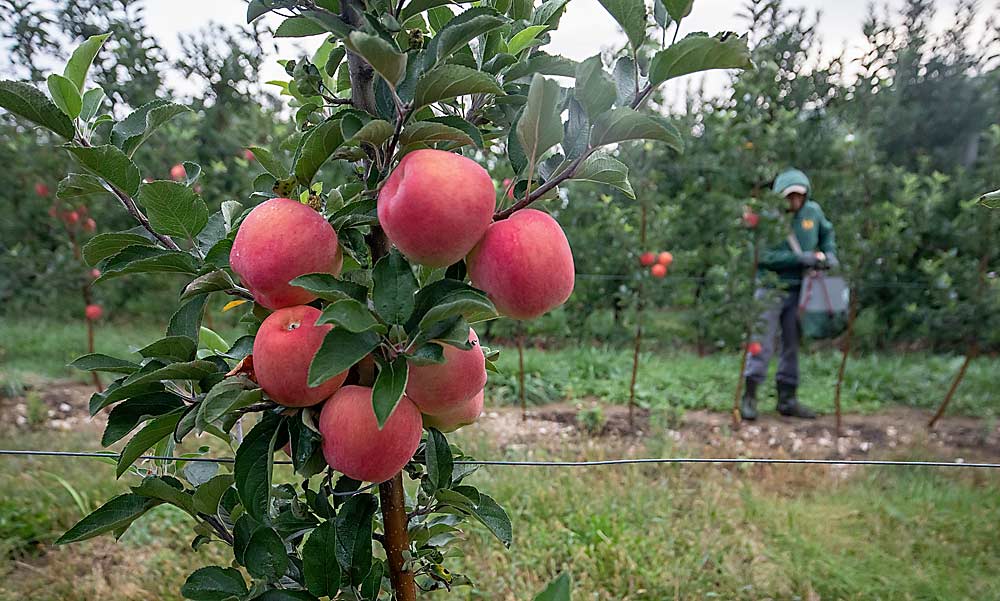
When the 20-year patent on Ambrosia expired a few years ago, some Pennsylvania growers decided to plant the Canadian variety in their own orchards. They chose Ambrosia because they knew consumers liked it and retailers wanted to sell it.
One thing they weren’t sure about is how well Ambrosia would grow in southern Pennsylvania. They know it does well in British Columbia, where it’s long been a mainstay for the Canadian province’s apple industry. But the Pacific Northwest and Mid-Atlantic climates are very different, and the Pennsylvania growers are still figuring out the best management practices for their region.
When some of the apple growers who supply Rice Fruit Co., the well-known Pennsylvania packer and grower, expressed an interest in growing Ambrosia a few years ago, the company encouraged them to plant it. Ambrosia is a nice apple, and there’s been demand for it from grocery stores, said Brenda Briggs, vice president of sales and marketing.
Rice Fruit packed and sold its first Ambrosia apples in 2021. The crop was small but will grow over the next few years, Briggs said.
Pennsylvania’s Adams County Nursery has sold about 75,000 Ambrosia trees to Pennsylvania growers in the past few years, on a mix of rootstocks. It’s a nice bicolor apple that harvests in late September, about the same time as Red Delicious, said company President Jen Baugher.
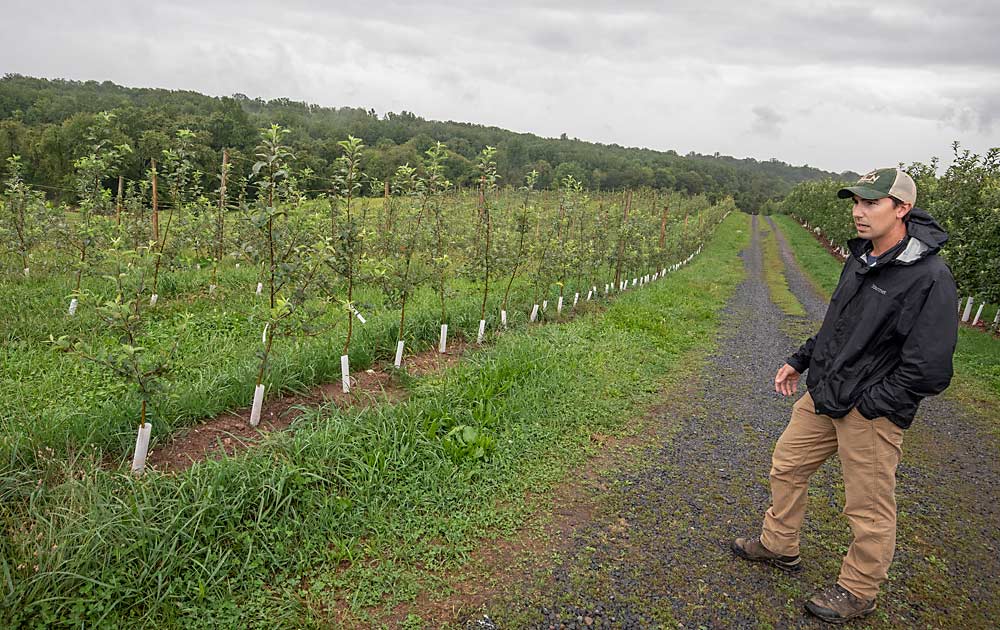
On the orchard side of Adams County Nursery, assistant manager John Paul Baugher planted about 10 acres of Ambrosia at 3 feet by 12 feet on Geneva 11, G.935 and Malling 9 rootstocks. He’s looking forward to cropping the trees for the first time this fall, when they’re in their third leaf. He said it’s an upright, vigorous tree.
“Any new variety is a gamble, but this one’s made a name for itself,” John Paul Baugher said.
At Bonnie Brae Fruit Farms in Gardners, Pennsylvania, Sarah Zost’s family planted 15 acres of Ambrosia in 2019 and 2020. They bought their Ambrosia trees from Adams County Nursery, on M.9-337 and G.11 rootstocks. Her father, Jim Lott, decided to plant the variety as soon as they had the chance, because it was already known and liked by grocery chains, and they needed a high-value apple to fill the Red and Golden Delicious harvest window, she said.
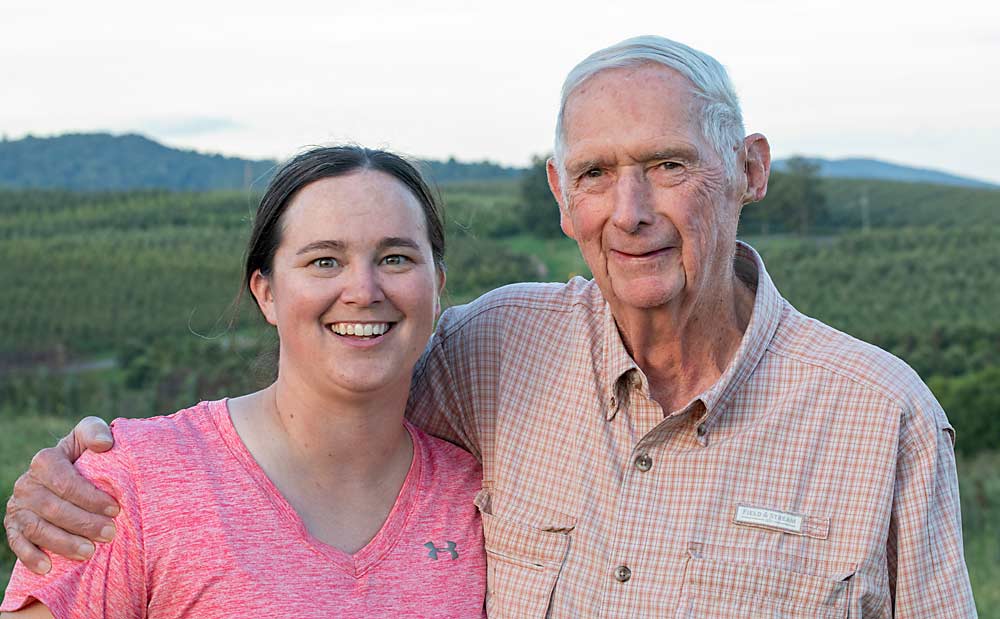
Their typical planting is about 5 feet by 15 feet, but for Ambrosia they went 2.5 by 12 with trellises. After getting advice from Canadian growers, Zost decided to make the plantings tighter than originally planned, so the trees would grow smaller canopies for greater light penetration and better-colored apples. Zost replaced a block of tart cherries her grandfather, Mac Lott, had planted — with Ambrosia. He didn’t think the change would be profitable, but he’s slowly coming around, she said.
They picked their first crop of Ambrosia, about 200 bushels per acre, last fall. It will be another two or three years before they get a full crop. The first Ambrosia crop looked nice overall, but there was one major area of concern: Brown marmorated stink bugs, BMSB, damaged about 60 percent of the crop. The bugs went after Ambrosia more than other varieties and hit it earlier than surrounding blocks, Zost said.
“Going forward, we’ll be more diligent in our spray timing,” she said.
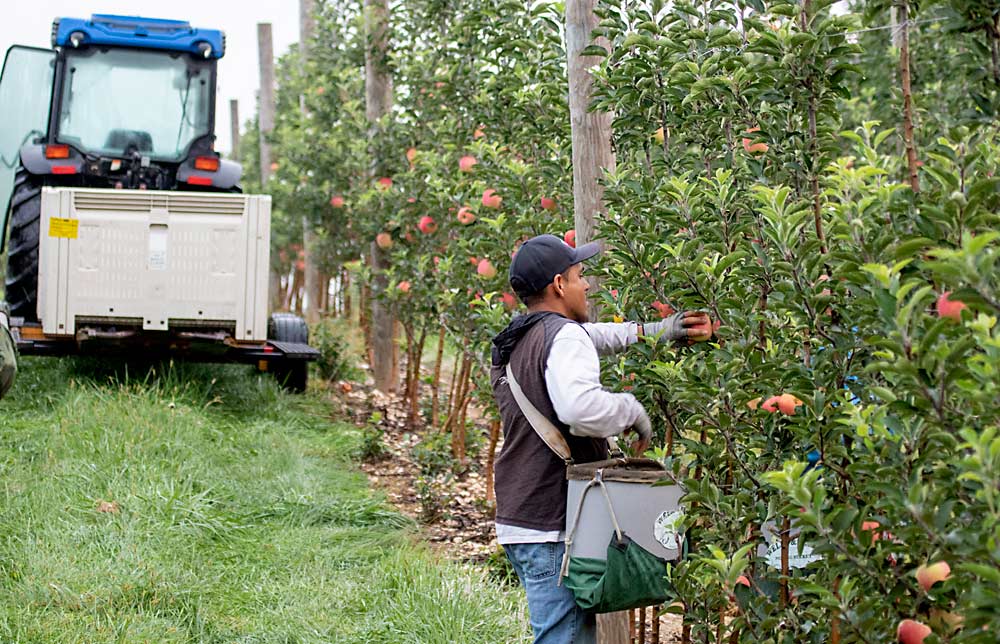
Blake Slaybaugh of Mt. Ridge Farms in Biglerville planted about 24 acres of Ambrosia on Budagovsky 9, roughly 1,800 trees to the acre. Canadian growers told him the closer the better when it comes to planting. He harvested about 200 bushels per acre last fall. The apples “went downhill pretty quickly” in storage, he said, but as the trees mature and settle down, he expects future crops to store better. He hopes a full crop will be 1,100 to 1,200 bushels per acre.
Slaybaugh said the first Ambrosia crop had some scab. Managing that will require a thorough fungicide program.
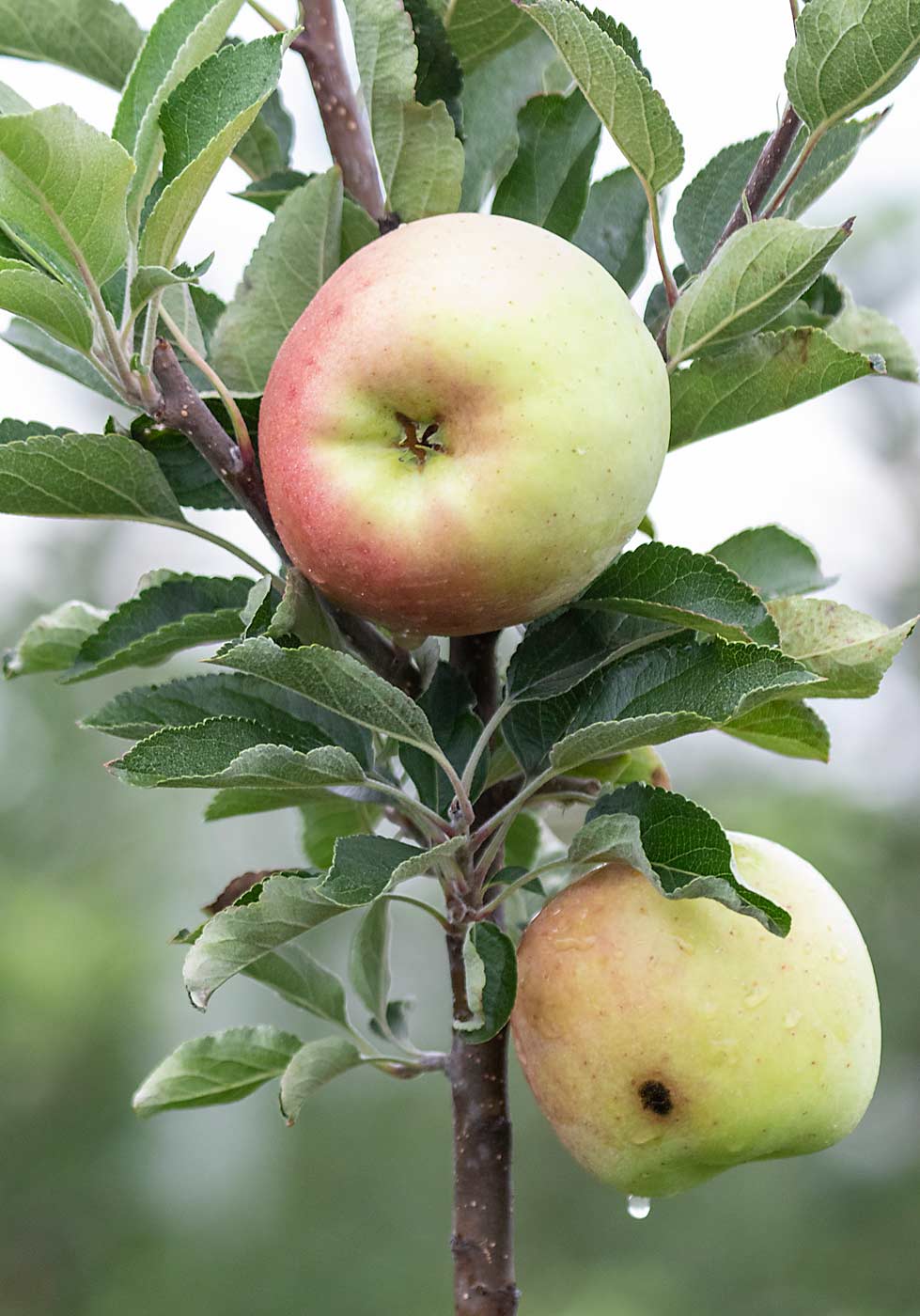
Brian Davis, co-owner of Hilltop Farm Market, planted about an acre of Ambrosia on G.11 in 2019, which he plans to sell at his farm market.
His spacing wasn’t as tight as other growers in the region, aiming for a freestanding tree at about 5 by 16. He said he didn’t want to spend too much on establishment costs before seeing how the apple performs.
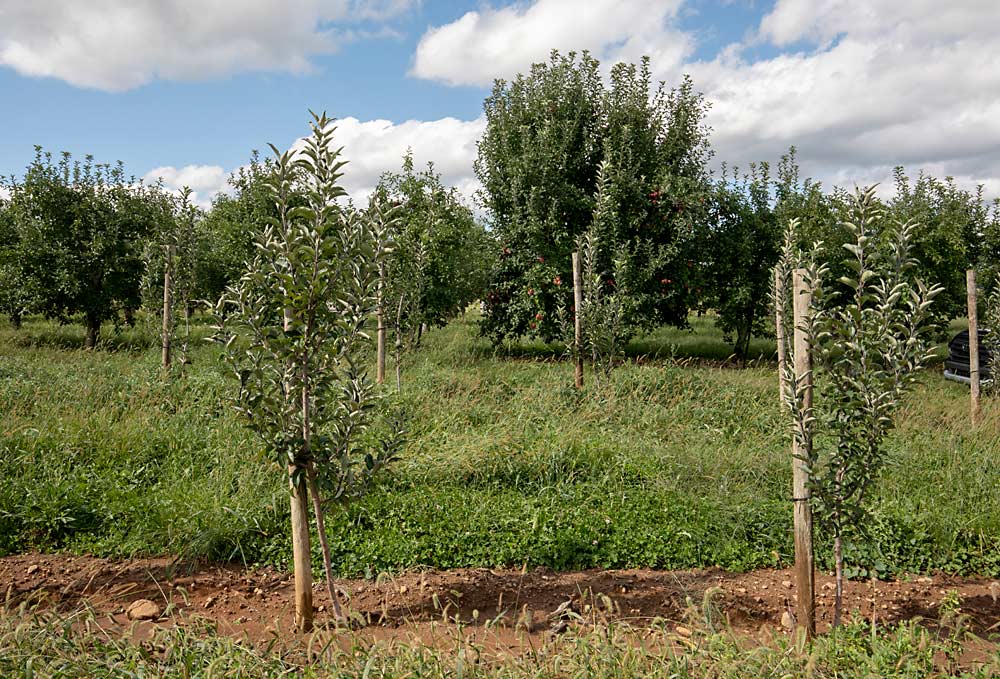
Davis is pleased with his Ambrosia, so far. The trees look healthy. His first small crop of apples looked good and had a nice flavor. There was some BMSB damage, but no more than on other varieties. Given its sweetness and ripening window, however, Ambrosia could be a “hot target” for BMSB, he said.
—by Matt Milkovich

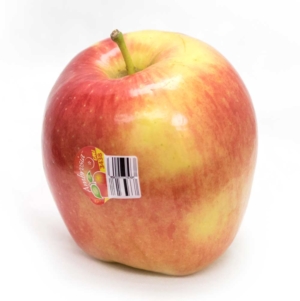






Leave A Comment